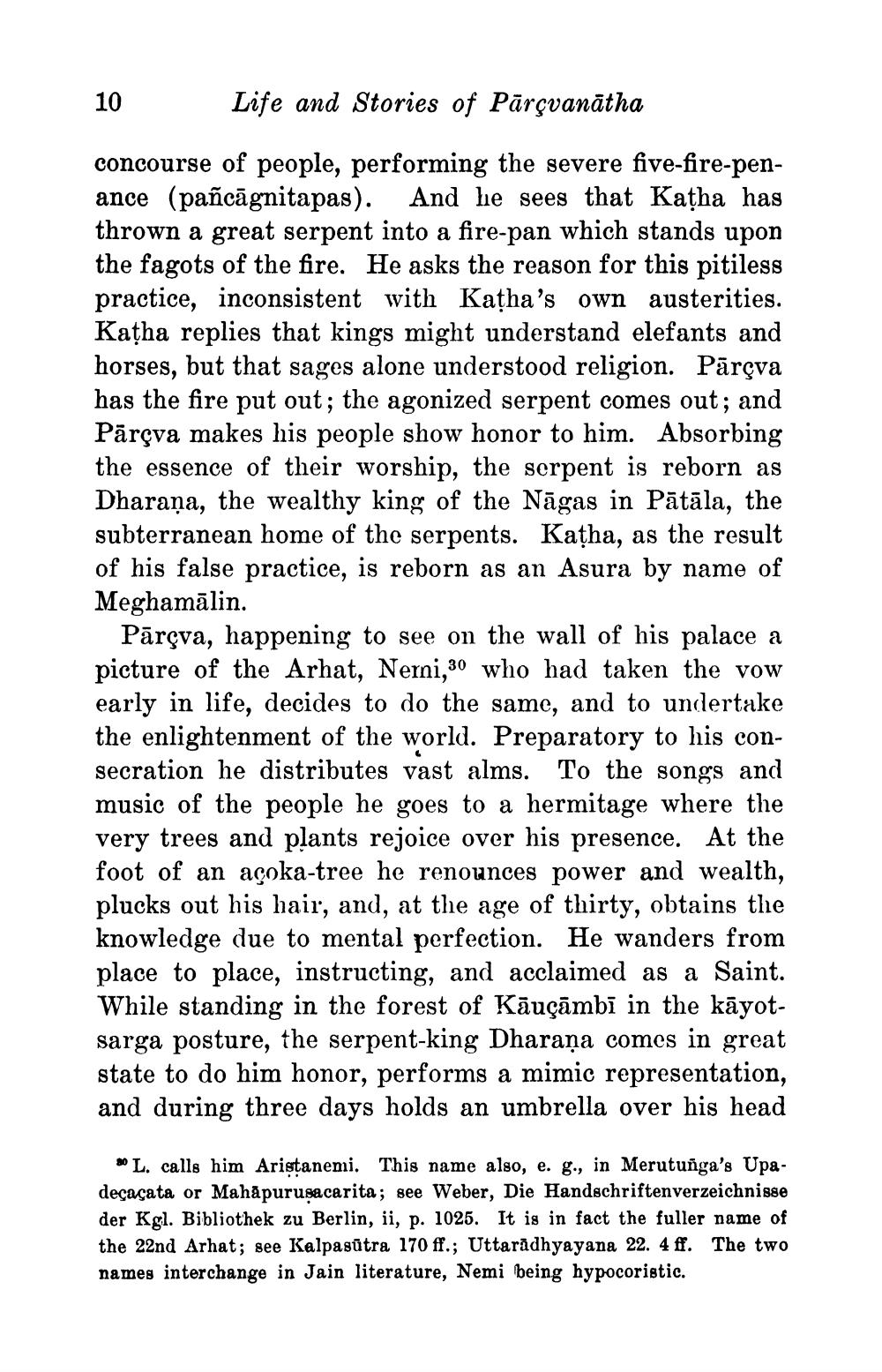________________
Life and Stories of Parçvanatha
concourse of people, performing the severe five-fire-penance (pañcagnitapas). And he sees that Katha has thrown a great serpent into a fire-pan which stands upon the fagots of the fire. He asks the reason for this pitiless practice, inconsistent with Katha's own austerities. Katha replies that kings might understand elefants and horses, but that sages alone understood religion. Pārçva has the fire put out; the agonized serpent comes out; and Pārçva makes his people show honor to him. Absorbing the essence of their worship, the serpent is reborn as Dharaṇa, the wealthy king of the Nagas in Pātāla, the subterranean home of the serpents. Katha, as the result of his false practice, is reborn as an Asura by name of Meghamālin.
Pārçva, happening to see on the wall of his palace a picture of the Arhat, Neri,30 who had taken the vow early in life, decides to do the same, and to undertake the enlightenment of the world. Preparatory to his consecration he distributes vast alms. To the songs and music of the people he goes to a hermitage where the very trees and plants rejoice over his presence. At the foot of an açoka-tree he renounces power and wealth, plucks out his hair, and, at the age of thirty, obtains the knowledge due to mental perfection. He wanders from place to place, instructing, and acclaimed as a Saint. While standing in the forest of Kauçāmbī in the kāyotsarga posture, the serpent-king Dharana comes in great state to do him honor, performs a mimic representation, and during three days holds an umbrella over his head
10
30 L. calls him Aristanemi. This name also, e. g., in Merutunga's Upadecacata or Mahāpurusacarita; see Weber, Die Handschriftenverzeichnisse der Kgl. Bibliothek zu Berlin, ii, p. 1025. It is in fact the fuller name of the 22nd Arhat; see Kalpasūtra 170 ff.; Uttaradhyayana 22. 4 ff. The two names interchange in Jain literature, Nemi being hypocoristic.




